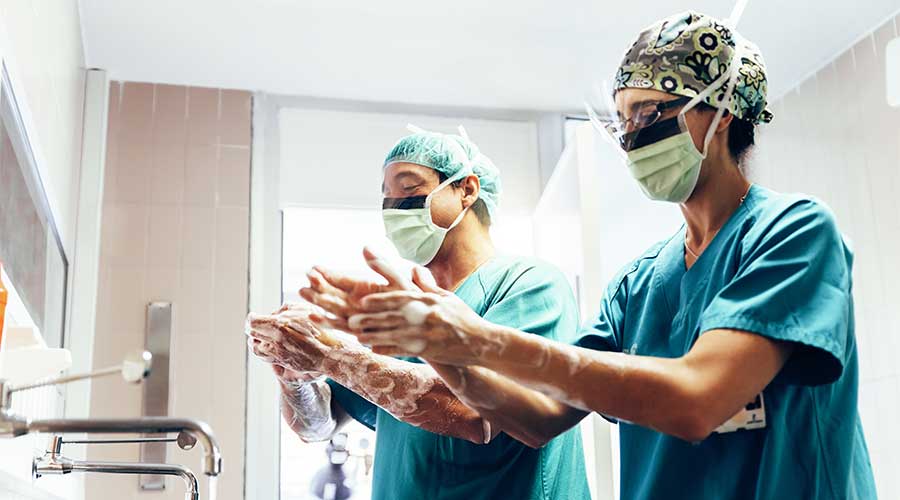Healthcare facilities that actively partner with their automated hand hygiene monitoring system (AHHMS) vendor can achieve greater improvement in hand hygiene performance – a backbone of infection control programs, according to a new study by researchers at GOJO Industries.
The study, The impact of automated hand hygiene monitoring with and without complementary improvement strategies on performance rates, was published online on August 22 in ICHE. Hand hygiene performance rates were estimated using the PURELL Smartlink activity monitoring system and showed greater sustained increases in hand hygiene performance when the hospital worked in collaboration with the vendor to implement the system and initiate complementary improvement interventions. Major findings of the study include:
AHHMS in combination with clinician-based vendor support and hospital-led unit-based initiatives led to statistically significant improvements in hand hygiene performance compared with the vendor-only, hospital-only or AHHMS-alone groups.
Hospital units in the vendor-plus-hospital group achieved a 76 percent increase in hand hygiene performance compared to the vendor-only group, a 46 percent increase compared to the hospital-only group and a 48 percent increase over the AHHMS-alone group.
“The use of AHHMS has been growing over the past decade as hospitals increasingly recognize it as a valuable tool in the fight to improve healthcare worker hand hygiene,” says co-author Lori Moore, a clinical educator with GOJO. “It’s been shown to provide substantially more quantitative data than direct observations and without observer bias. It provides a real-time view for infection control staff to see how well their hand hygiene performance improvement strategies are working. And if they aren’t, they can quickly adjust course.”

 UF Health Hospitals Rely on Green Globes to Realize Their Full Potential
UF Health Hospitals Rely on Green Globes to Realize Their Full Potential How Healthcare Facilities Can Be Truly Disaster-Resilient
How Healthcare Facilities Can Be Truly Disaster-Resilient TriasMD Breaks Ground on DISC Surgery Center for San Fernando Valley
TriasMD Breaks Ground on DISC Surgery Center for San Fernando Valley Bigfork Valley Hospital Falls Victim to Data Breach
Bigfork Valley Hospital Falls Victim to Data Breach AI-Driven Facilities: Strategic Planning and Cost Management
AI-Driven Facilities: Strategic Planning and Cost Management